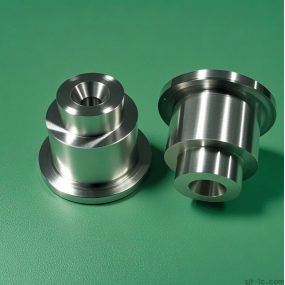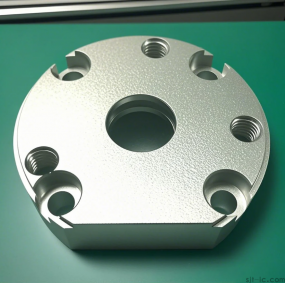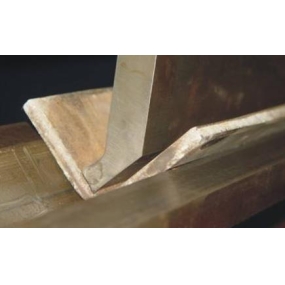Regardless of the number of edges of the end mill for a five axis machining center tool, the first step is to grind the blade end face straight to the axis, which is the key to ensuring that the outstanding point of the five axis machining center blade can be in the same plane. Before sharpening the five axis machining tool, it is necessary to inspect the grinding wheel. If any problems such as wheel jumping, irregular cylindrical surface, or excessive rounded corners are found, they need to be repaired.
Generally, the cylindrical surface of the grinding wheel can be trimmed using a grinding wheel corrector (such as a diamond dresser, a gear dresser, etc.), or it can be trimmed using a waste grinding wheel with relatively high abrasive hardness. If the side plane of the grinding wheel is no longer flat, the grinding wheel can be replaced.
Firstly, when grinding each blade separately, the tip of each blade should be taken as the reference, and the retention of the blade tip should be the criterion. The front angle (if there is no broken blade, it cannot be ground), back angle, secondary back angle (if a large cutting amount requires good strength, it is recommended to add a large blade wedge angle before grinding), and blade inclination angle should be adjusted.
Secondly, the selection of viewpoints is based on a rear angle of 6-8, a secondary rear angle of 30-45, and a blade inclination angle of 1-3. The selection of the rear corner needs to be adjusted according to the hardness of the workpiece, with a higher material hardness resulting in a smaller viewing angle; The criterion for selecting the viewpoint of blade inclination angle is that all four blades must be concave towards the middle, and the flatter the viewpoint, the better the roughness accuracy. At this point, the deeper the processing depth (such as greater than 2mm but within the permitted scale), the better the roughness accuracy, because the entire cutting edge participates in the cutting results.
Then, after the grinding of the five axis linkage machining tool is completed, the milling cutter is raised vertically in a five axis machining center channel. If the axis is straight, all blade tips can be level, and the angle of the blade can be evenly aligned. Such five axis CNC Machining tools can meet the requirements.
In addition, the five axis machine tool tool can also be calibrated with a 90 square on a flat plate. After leveling, investigate whether there is a gap between the milling cutter and the square or whether the gap is even. Generally, two relatively high feet are first investigated (the two feet that touch the bottom first). If the higher feet are not straightened and ground, the two opposing feet will be ground to the same height (i.e. straight).
At this point, there is a height difference between these two feet and the other two opposing feet, causing the milling cutter to sway and lower the two higher feet together. Similarly, rotate the milling cutter by 90 degrees to investigate the straightness of the other two opposing feet, so that all four feet touch the bottom together and make the milling cutter straight.
In manual grinding of a five axis machining center, it is not easy to grasp the height and various viewpoints of the blade. Practice should vary from person to person, as long as you pay attention to grinding a small back angle. If the top blade is not smooth, just make the cutting edge outstanding. If it is not in the condition of cleaning the inner cavity, the cutting edge can be chamfered by more than 0.2mm to increase the strength of the cutting edge.


 Spanish
Spanish Arabic
Arabic French
French Portuguese
Portuguese Belarusian
Belarusian Japanese
Japanese Russian
Russian Malay
Malay Icelandic
Icelandic Bulgarian
Bulgarian Azerbaijani
Azerbaijani Estonian
Estonian Irish
Irish Polish
Polish Persian
Persian Boolean
Boolean Danish
Danish German
German Filipino
Filipino Finnish
Finnish Korean
Korean Dutch
Dutch Galician
Galician Catalan
Catalan Czech
Czech Croatian
Croatian Latin
Latin Latvian
Latvian Romanian
Romanian Maltese
Maltese Macedonian
Macedonian Norwegian
Norwegian Swedish
Swedish Serbian
Serbian Slovak
Slovak Slovenian
Slovenian Swahili
Swahili Thai
Thai Turkish
Turkish Welsh
Welsh Urdu
Urdu Ukrainian
Ukrainian Greek
Greek Hungarian
Hungarian Italian
Italian Yiddish
Yiddish Indonesian
Indonesian Vietnamese
Vietnamese Haitian Creole
Haitian Creole Spanish Basque
Spanish Basque











